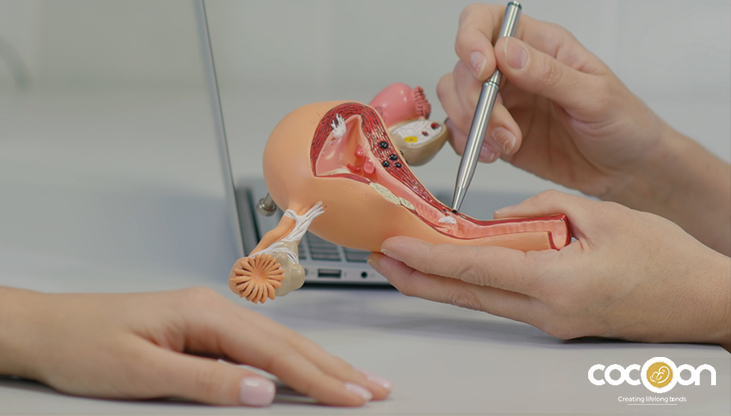As a new parent, one of the most significant things you need to do is feed your baby. It's not always easy to know when and how much to feed them. With so many varying guidelines, tips, and advice available, it's no wonder that you might feel bogged down. That's where having a baby feeding chart can be helpful.
What is the Importance of Baby Feeding Charts
Baby feeding charts act as a guide for parents to know what their baby needs nutritionally at different stages of development. They can help you in knowing:
- How much to feed your baby
- What food is suitable for their age
- When to add new foods and textures
- How often to feed your baby
These charts can also be used to monitor your baby's growth and make sure they are receiving sufficient nutrition. Each baby is unique, but a feeding chart gives parents a general idea of what to do.
Baby's Feeding Needs at Various Stages
Baby’s feeding needs change according to the stage.
Newborn Stage (0 to 2 Months)
During the initial few weeks of birth, infants basically consume breast milk or formula. During this time, they possess tiny stomachs and require more frequent feeding.
Frequency of feeding: Infants usually feed every 2-3 hours, even at night. A few babies will eat more frequently, particularly if breastfed.
How much to feed: Newborns tend to take approximately 1-3 ounces of milk per feeding in the first week. By two months, they may take 3-4 ounces per feeding.
Feeding Chart for Newborns:
| Age | How Often to Feed | Amount per Feeding |
| 0-1 Month | Every 2-3 hours | 30-90 ml (1-3 ounces) |
| 1-2 Months | Every 3-4 hours | 90-120 ml (3-4 ounces) |
2 to 4 Months
At this point, your baby should be developing a more regular eating schedule. They may be sleeping more at night but still requiring several feedings throughout the day.
- How often to feed: Infants usually require 4-6 feedings a day.
- How much to feed: Infants will probably consume 4-6 ounces of milk at each feeding. If they are breastfeeding, they may nurse 10-15 minutes per breast.
2-4 Months Feeding Chart
| Age | How Often to Feed | Amount per Feeding (Grams) |
| 2-3 Months | Every 3-4 hours | 120-180 grams |
| 3-4 Months | Every 3-4 hours | 120-180 grams |
4 to 6 Months
Some babies are ready to begin solids at this stage, but continue to have breast milk or formula as the principal source of diet.
- How often to feed: Feed your baby 4-6 times a day.
- How much to feed: Along with milk, you may introduce small quantities of solid food. You can start with single-grain cereals or fruit and vegetable purees. Start with 1-2 tablespoons of solids and increase gradually.
Feeding Chart for 4-6 Months:
| Age | How Often to Feed | Amount per Feeding (Grams) |
| 4-5 Months | Every 4 hours | 120-180 grams milk + 15-30 grams solids |
| 5-6 Months | Every 4-5 hours | 120-180 grams milk + 30-60 grams solids |
6 to 8 Months
Babies at this age require a multitude of solid foods and can now start consuming more complicated textures, such as mashed fruits and vegetables. Breast milk or formula, however, must remain the main source of food.
- Frequency of feeding: 4-5 milk feeds and 2-3 solid meals daily.
- How much to feed: You may feed 4-8 ounces of milk per feeding. For solids, you may feed 4-6 tablespoons of puree or mashed food per meal, increasing gradually.
Feeding Chart for 6-8 Months:
| Age | How Often to Feed | Amount per Feeding (Grams) |
| 6-7 Months | Every 4-5 hours | 120-240 grams milk + 60-90 grams solids |
| 7-8 Months | Every 4-5 hours | 120-240 grams milk + 90-120 grams solids |
8 to 12 Months
By the age of 8 months, your baby might be consuming more solid foods with a greater range of textures and tastes. You can begin to provide small amounts of soft food for them to grasp and feed themselves.
- Frequency of feeding: 4 milk feedings and 3 solid meals a day.
- How much to feed: Milk consumption drops to approximately 6-8 ounces per feeding. Solid foods should be more predominant in the diet, and you can begin introducing more complicated meals.
Feeding Chart for 8-12 Months:
| Age | How Often to Feed | Amount per Feeding (Grams) |
| 6-7 Months | Every 4-5 hours | 120-240 grams milk + 60-90 grams solids |
| 7-8 Months | Every 4-5 hours | 120-240 grams milk + 90-120 grams solids |
12 Months and Older: Whole Foods Transition
Once your baby reaches 1 year of age, you can start weaning them onto a more diverse diet. Whole milk (or its equivalent) now takes the place of formula or breast milk, and they may have more standard family meals, cut up into small pieces.
- How often to feed: 3 meals per day and 1-2 snacks.
- How much to feed: Keep on giving whole milk, approximately 8 ounces for each meal. Provide a well-balanced plate of protein, vegetables, fruits, and cereals.
Feeding Chart for 12 Months and Older:
| Age | How Often to Feed | Amount per Feeding (Grams) |
| 12–18 Months | 3 meals, 1–2 snacks | ~240 grams milk + regular family foods |
| 18–24 Months | 3 meals, 1–2 snacks | ~240 grams milk + regular family foods |
Tips for Feeding Your Baby
- Listen to Your Baby's Hunger Cues: All babies are unique. If your baby appears to be hungry in between meals, it's all right to feed them a little bit extra.
- Introduce New Foods Slowly: Always add one new food at a time and wait for a few days to check whether your baby shows any signs of allergy.
- Avoid Honey: Never feed honey to babies less than 1 year old as honey can cause botulism.
- Consistency is Key: Babies thrive on routine. Try to feed your baby around the same time each day.
- Use the Right Feeding Tools: Ensure the baby bottles, nipples, and utensils you’re using are suitable for their age and development.
Conclusion
Working your way through baby feeding can be tricky as a new parent, but using baby feeding charts you can stay on course. Baby feeding charts are an easy-to-use map for what to give your baby and when and help you ensure your baby is getting the nourishment they require to grow and flourish. Just keep in mind, every baby is different, so while these charts are useful, it's a good idea to listen to your baby's individual needs.
By following the guidelines and tips, you’ll feel more confident in your ability to nourish your baby and ensure they’re developing healthy eating habits from the start.

















